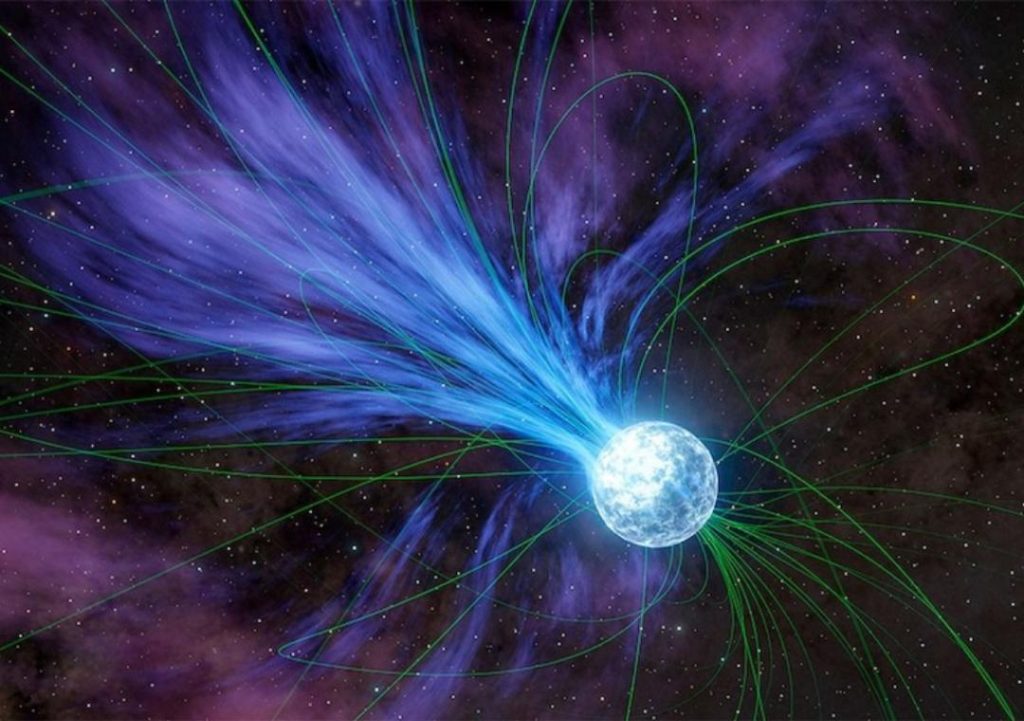
Gold & Platinum Created through Neutron Stars’ Explosions: Study
For centuries, humans have been fascinated by the origin of precious metals like gold and platinum. While we’ve long known that these elements are abundant on Earth, we’ve never been entirely sure how they got here. Now, a groundbreaking study has shed new light on this mystery, revealing that magnetars, or highly magnetized neutron stars, played a crucial role in creating these valuable metals.
According to a study led by Columbia University student Anirudh Patel, magnetars exploded and released flares that contained gold and platinum, among other elements. These explosions, which occur approximately once per decade in the Milky Way galaxy and annually across the observable universe, are thought to have taken place over 20 years ago.
The study, published in the journal Nature, provides a long-sought explanation for the origin of these precious metals. For decades, scientists have been searching for answers, and NASA’s answer has finally been revealed.
But how do magnetars create gold and platinum? To understand this process, we need to delve into the world of neutron stars and the extreme conditions that exist on their surfaces.
Neutron Stars: The Cosmic Furnace
Neutron stars are incredibly dense objects that form when a massive star undergoes a supernova explosion. These stars are so dense that a sugar-cube-sized amount of their material would have a mass of about a billion tons. The intense gravity and heat generated by these stars create extreme conditions, with temperatures reaching millions of degrees Celsius.
At the surface of a neutron star, the heat and pressure are so extreme that they create a “cosmic furnace” where nuclear reactions can occur. In this furnace, elements are created through a process known as rapid neutron capture, or r-process nucleosynthesis.
Magnetars: The Explosive Event
Magnetars are a type of neutron star that is characterized by its extremely strong magnetic field. This field is so powerful that it can be billions of times stronger than the Earth’s magnetic field, and it’s what sets magnetars apart from other neutron stars.
When a magnetar experiences a massive release of energy, it can lead to an explosive event known as a magnetar burst. During this event, the magnetar’s magnetic field becomes so unstable that it releases a huge amount of energy in the form of electromagnetic radiation, including X-rays and gamma rays.
It’s during these bursts that gold and platinum are created through the r-process nucleosynthesis. The extreme conditions on the surface of the magnetar allow for the creation of heavy elements, including these precious metals.
The Explosion and the Elements
According to the study, the magnetar burst released a massive amount of energy, including the elements gold and platinum. These elements were then dispersed into space, where they could be incorporated into other celestial objects, such as planets and asteroids.
The study suggests that the explosion occurred over 20 years ago, and that the gold and platinum were released into space at that time. While it may seem like a long time ago, the fact that these elements are still present in our universe today is a testament to the incredible power of these magnetar bursts.
The Implications of the Study
The discovery that gold and platinum were created through magnetar explosions has significant implications for our understanding of the universe. It suggests that these elements are not unique to our planet, but are instead a natural part of the universe’s chemical makeup.
For scientists, this study opens up new avenues of research into the origins of the universe and the creation of heavy elements. It also highlights the importance of continued exploration and discovery, as we seek to understand the mysteries of the universe and our place within it.
Conclusion
The study led by Anirudh Patel and his team has provided a groundbreaking answer to a long-standing question about the origin of precious metals like gold and platinum. By revealing the role that magnetars play in creating these elements, we have gained a new appreciation for the incredible power and complexity of the universe.
As we continue to explore the universe and uncover its secrets, we are reminded of the incredible mysteries that remain to be solved. And yet, with each new discovery, we are also reminded of the incredible beauty and complexity of the universe we inhabit.
Source:






